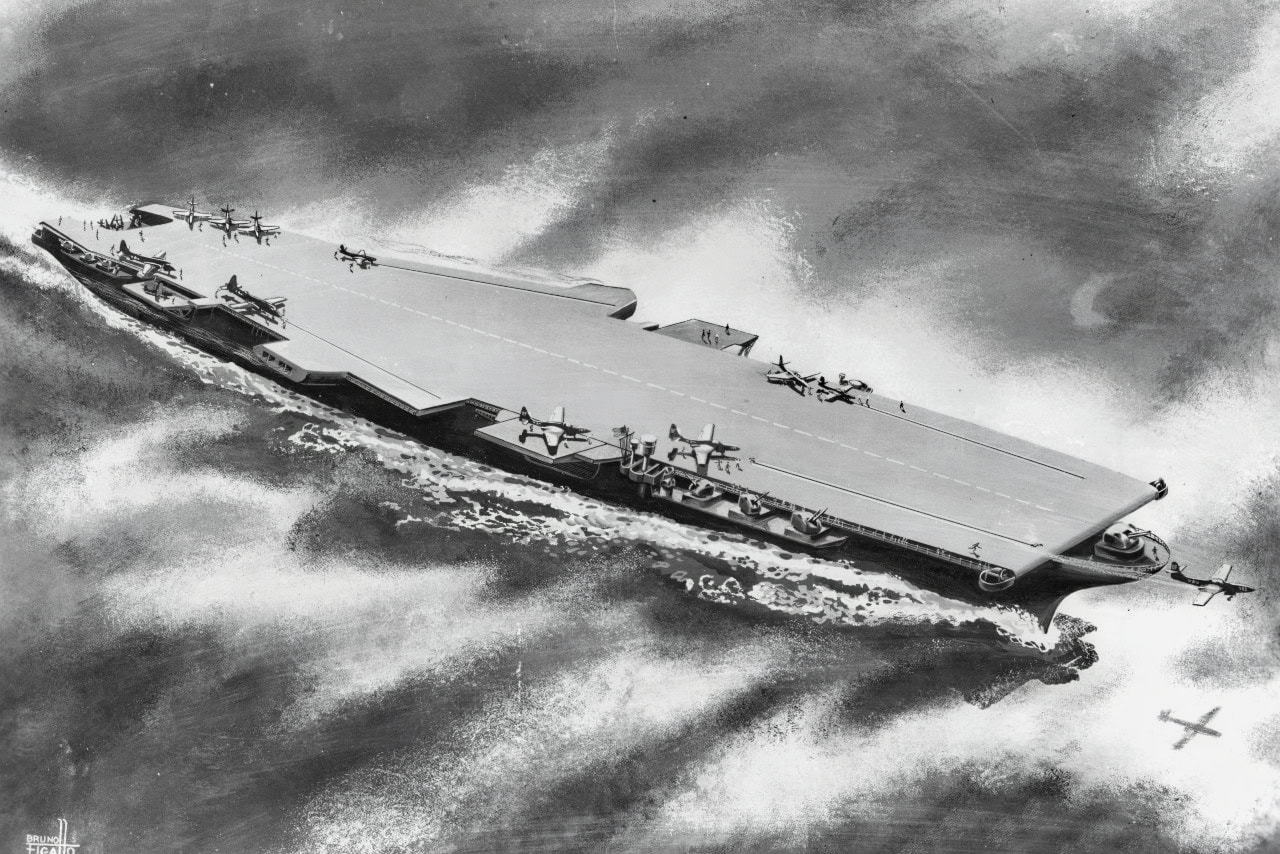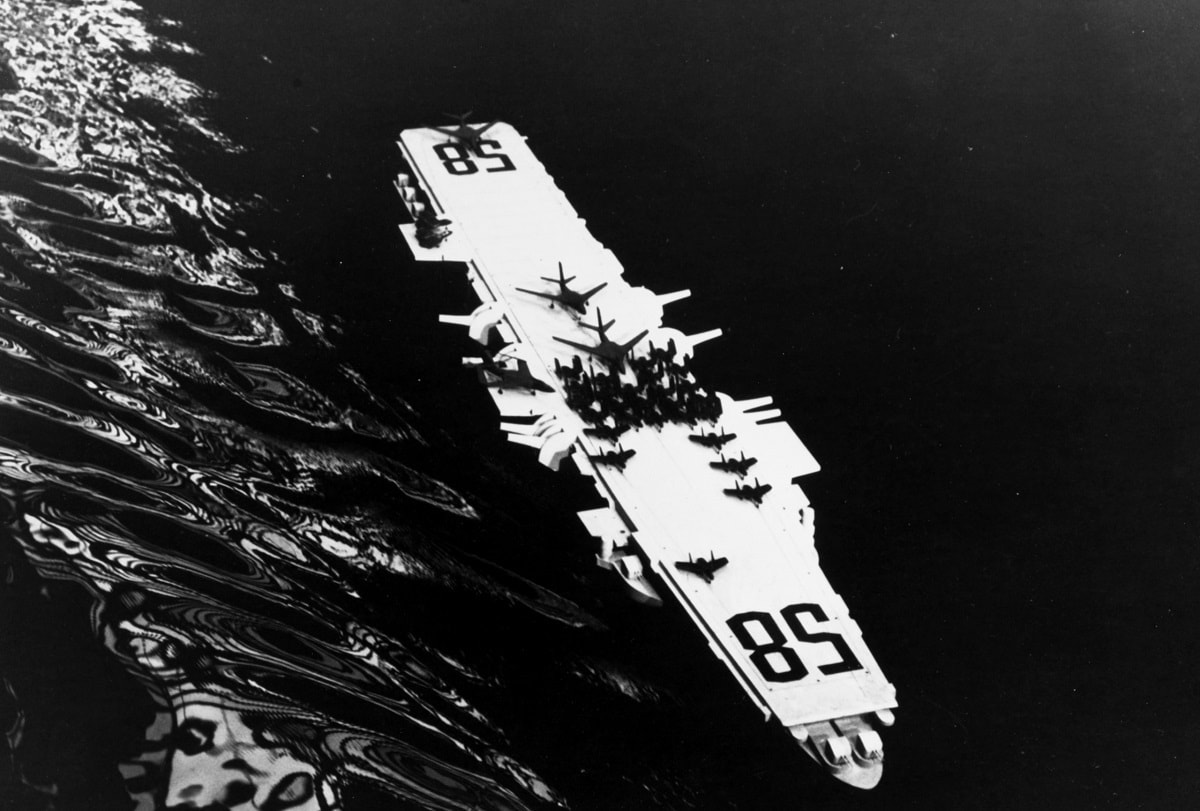1 February 2025: February folks! The year is 1/12th over! Cold snap come and gone (for now), the UK slammed with disastrous winter storm - We hope our friends in England, Ireland Scotland, and Wales managed to stay safe and secure! I am told Spring is coming - though when is currently up for grabs!
A note of apology to the folks who have requested email notification of new posts; the email for the last issue had a typo in the link. However, that said, we've been doing this for over ten years now, so hopefully the typo did not cause too many problems with folks not finding the proper address! We will attempt more care going forward!
This issue of Maritime Maunder deals with a United States Navy aircraft carrier that never got built. An interesting bit of sea lore. From 1945 National Security (digital):
~~~~~~~~~~~~~~~~~~~
USS United States: The Aircraft Carrier the Navy Stopped Building After 5 Days
After World War II, the United States military was unmatched in power worldwide. The Empire of Japan and Nazi Germany, their enemies during the war, lay in ruins. Most of Europe was destroyed after six years of war. Large parts of Asia were also involved, especially China.
Everything was rosy for the United States in those days. Without a doubt, America was the preeminent world power. And Washington wanted to keep things that way. After an isolationist period, America was the world’s policeman.
But the National Security Act of 1947 changed everything. The Army Air Corp, which filled the skies over Europe with B-17 and B-24, as well as several small bombers, and dropped atomic bombs on Japan, had become the US Air Force.
The Air Force didn’t feel like they were the new kids on the block. They thought they were the #1 Draft Pick in the NFL, the top quarterback who was coming to lead a bunch of no-name players to the Super Bowl. Everything was bigger and bigger: land-based nuclear-armed bombers and shiny, sleek fighters.
The Navy wasn’t about to let some upstart upset their turf, especially since they were the ones who swept the mighty Imperial Japanese Navy from the seas. The two services vied for the biggest piece of the budget pie from the Defense Department, like the second and third monkeys on Noah’s Ark, and it was raining cats and dogs.
And it all came to a head over an aircraft carrier.
The USS United States (CVA-58) was supposed to be the lead ship of a new class of supercarriers. The CVA designation was murky but was either for attack or atomic.
 |
| [ed: strange design, for sure] |
President Truman approved the construction of the new class of carriers after funds were provided in the Naval Appropriations Act of 1949. The design was quite the radical departure from the World War II-era flattops, and in essence, seemed unfinished as it was indeed a flat top with no island.
The proposed 65,000-ton carrier (83,000 tons fully loaded) would
feature a flush deck designed to launch and recover large aircraft up to
100,000 pounds. It could also carry the nuclear weapons of the era,
which weighed as much as five tons.
With no island, there wasn’t a place for radar, air operations, and command and control, which were nearly impossible. It had to be handled from a sister command ship. This meant the USS United States would be a floating air base.
Older carriers were constructed before nuclear power plants were even thought of. The old power plants generated a lot of smoke, with no island and no stack; where does the smoke go without interfering with air operations on the deck? That would be a significant issue in diverting the smoke safely.
The Air Force Wanted the Program Canceled
The new US Air Force, as previously mentioned, thought that the Strategic Air Command (SAC)—with the latest heavy bombers that could carry nuclear weapons—was the be-all, end-all. However, the Navy under Admiral Marc Mitscher, who was involved in many of the most significant Pacific operations during World War II, wanted the Navy to get its piece of the pie.
What Mitchser wanted was an aircraft carrier capable of launching nuclear-armed strategic jet bombers off its decks to attack military installations of the Soviet Union or any future enemy.
 |
| model of CVA 58 in tank testing |
However, the urge to get big nuclear bombers on Navy flight decks blinded the Navy brass to flaws in the design of CVA-58. The ship’s armament consisted of a full battery of eight five-inch guns, 16 76-mm autocannons, and up to 20 smaller 20 mm Oerlikon anti-aircraft guns.
When the ship was approved for construction, Air Force Chief of Staff General Hoyt S. Vandenberg sent a memo to Secretary of Defense James Forrestal defining in no uncertain terms the service’s position on the “supercarrier.” Its purpose was “to prevent Congress” from further committing to approving the carrier.
USS United States Aircraft Carrier: Construction Stopped in 5 Days
Much infighting took place over the “supercarrier,” with the heads of the Joint Chiefs lobbying for support. This was referred to as “The Revolt of the Admirals, because of how hard the Navy fought for this project. Then, the project was abruptly canceled just five days after the keel was laid.
Things eventually worked out for the Navy. They instead got the Forrestal-class carriers at the start of the Korean War.
However, the bad blood between the Navy and Air Force continued well after that, and some would claim that even today, that is why the services operate the way they do.
~~~~~~~~~~~~~~~~~
We have to admit, that is one strange looking vessel - and we can only imagine the problems that would have cropped up had it been built! As the article mentioned, radar, command and control spaces, and a myriad other issues. Actually saved some money on that decision!
Stay warm folks, and be safe!
Until next time,
Fair Winds,
Old Salt

No comments:
Post a Comment